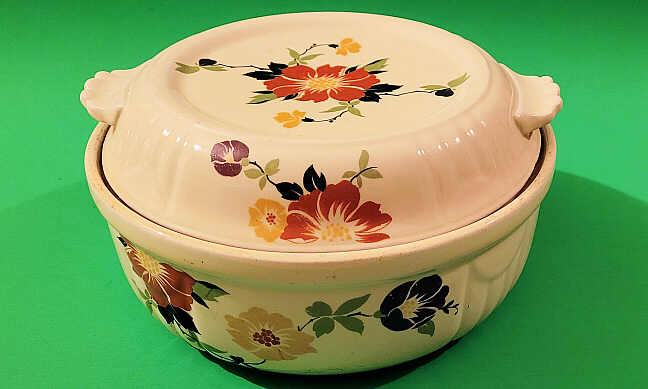|
The table below contains links to the contents of four decal books used by Hall China. They date from the 1930s through the late 1950s.
Most area potteries would purchase decals from the same suppliers. Each supplier had their own numbers assigned to the decals. However, most potteries would give them new numbers to fit their own system. Hall China was different in that they did not reassign the numbers. Whatever number the supplier used, that was what Hall used. This is why pattern 488 is called such. It is the number the supplier used.

Pattern 488 on a covered casserole.
All of the decals had numbers. Red Poppy was 1578. Crocus was 6130. Even Autumn Leaf had one. It should be noted in Jewel Tea catalogs, Autumn Leaf is called, "Autumn Pattern." Regardless of what Jewel Tea called it (or what collectors call it today), Hall would simply use the supplier's number. In this case, 751.
There was one obvious advantage to this practice. Hall never had to cross reference treatment numbers and supplier numbers so mistakes in ordering decal sheets must have been pretty rare. Also, compared to the other potteries, Hall had fewer patterns at any given time. This might be how Hall was able to use the supplier numbers instead of creating a new numbering system.
Even if a pattern had an official name, it still had a number. For example, from the Eva Zeisel Hallcraft lines; Mulberry was 2053, Harlequin was 6237, and Caprice was 2298.
Special thanks to the Fiesta® Tableware Company (formerly HLCCo) for allowing me to photograph and document the decal book pages. All four books are now housed at the Museum of Ceramics in East Liverpool, Ohio.
|